Berenice Abbott – The Female Pioneer in Urban Photography
Berenice Abbott, a pioneering figure in 20th-century photography, left an indelible mark on the medium through her innovative and insightful work. Born in 1898, Abbott’s career spanned multiple decades and encompassed a diverse range of subjects, from capturing the fast-paced energy of New York City to delving into scientific photography. Her keen eye for composition and dedication to exploring the intersection of art and science resulted in iconic images that continue to inspire photographers and art enthusiasts alike. In this article, we delve into the life, work, and enduring legacy of Berenice Abbott, shedding light on her significant contributions to the world of photography.
Table of Contents
Key Takeaways
- Berenice Abbott was a key figure in documentary and portrait photography during the 20th century.
- Her photography is celebrated for its portrayal of New York City’s evolution and for its scientific interpretation.
- Abbott’s legacy is marked by her contributions to preserving the history of photography and her impact on visual culture.
Early Life and Influences
| Birth | July 17, 1898 |
| Death | December 9, 1991 |
| Place of Birth | Springfield, Ohio, United States |
| Genre of Work | Photography, documentary photography, and portrait photography |
Berenice Abbott was an influential American photographer whose work provides an enduring chronicle of the urban landscape and architecture of New York City during the transformative 1930s. Her realist vision was not limited to urban scenes; she also gained renown for her scientific photography from the 1940s to 1960s and for her striking portraits of important cultural figures between World War I and World War II. Abbott’s work was characterized by a clarity and attention to detail that have made her photographs a valuable historical record.

It was in New York City that she captured the rapid social and physical changes of the time with her camera. Moreover, she played a pivotal role in immortalizing the legacy of French photographer Eugène Atget by preserving and promoting his work. Her documentation style was both educational and communicative, striving to affect change through the power of the photographic print.
Ohio Origins
Berenice Abbott was born on July 17, 1898, in Springfield, Ohio. Raised by her divorced mother, her childhood environment provided a backdrop that sharply contrasted with the vibrant cityscapes she would later document.
Abbott’s journey into photography began with her exposure to the bohemian and avant-garde circles of Paris and New York, where she absorbed the dynamism of the Roaring Twenties and the subsequent Great Depression.
Early Training
Her interest in the arts led her to attend The Ohio State University, albeit briefly. In early 1918, Abbott left the institutions and later moved to New York City to forge her own path in the arts, initially studying sculpture and coming into contact with influential artists.
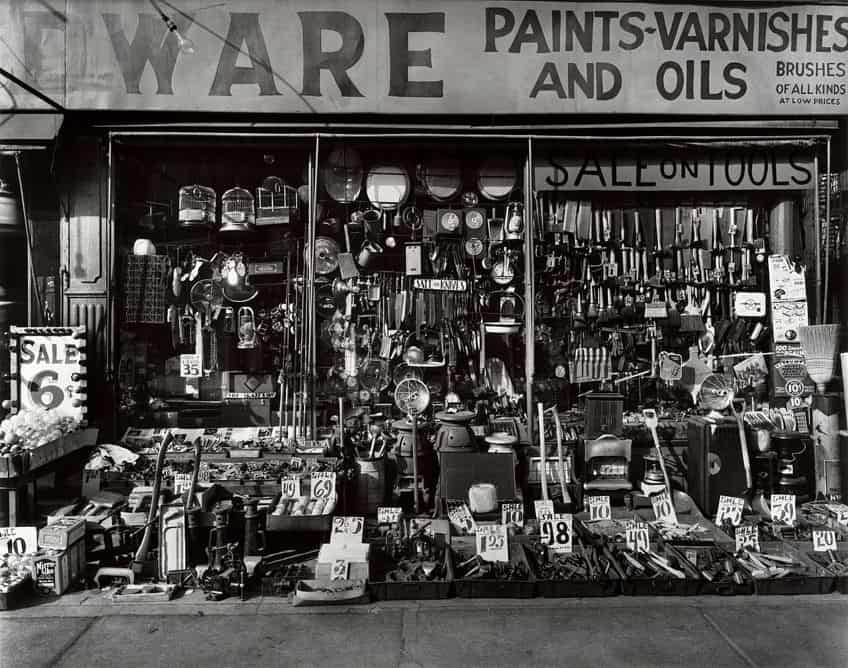
Paris and Learning from Man Ray
It was the move to Paris in the 1920s that ignited Abbott’s passion for photography. Working as an assistant to acclaimed expatriate photographer Man Ray, she honed her skills.
This is how she began to carve her niche in the artistic landscape of the city.
Discovering Eugène Atget
Abbott’s artistic vision was profoundly influenced by her discovery of Eugène Atget’s work. His dedication to cataloging the old Paris resonated with her, and she became instrumental in preserving and promoting Atget’s legacy.

Mature and Late Period
Abbott spent the latter part of her life in Maine, having moved there after purchasing a home. The tranquility of Maine provided a stark contrast to the bustling energy of New York, allowing her to explore and document its landscape.
Her famed collection, A Portrait of Maine, was published in 1968.
Pivotal Works
Berenice Abbott’s photographic contributions are marked by iconic portraiture, her comprehensive visual documentation of New York City, and insightful scientific interpretation. Each project not only stands as a testament to her talent but also chronicles distinct aspects of American culture and scientific understanding during the 20th century.

Portraiture and James Joyce
Berenice Abbott gained early acclaim with her portraiture. In the cultural milieu of Paris, she photographed numerous literary figures, with James Joyce being one of the most notable subjects.
Her portrait of Joyce is often considered emblematic of his persona, capturing a certain intensity that many associate with the writer.
Changing New York Project
Through the Changing New York project, Abbott provided a unique and comprehensive visual record of New York City in the 1930s. This work was conducted under the auspices of the Federal Art Project and resulted in iconic imagery that reflects the architectural transformation of the city. The collection is renowned for its contribution to documentary photography and is featured in the Museum of Modern Art as part of the exhibit, Photography: 1839–1937.
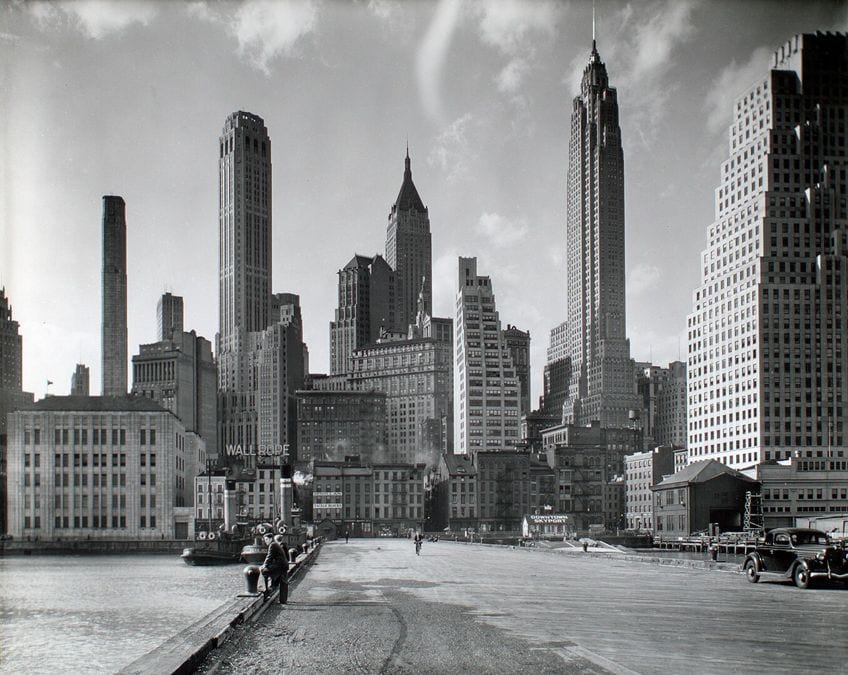
Scientific Interpretations
Later in her career, Abbott’s focus shifted to the realm of science interpretation. She used her photographic skills to create images that made scientific phenomena accessible and visually engaging.
These photos were educational and showed a profound understanding of scientific principles, contributing significantly to visual education materials.
Artistic Style and Technique
Berenice Abbott’s artistic style is marked by a distinctive use of light and composition, influenced by avant-garde and architectural elements. Her technique emphasizes clarity and detail, utilizing specific materials and methods to create gelatin silver prints with a modernist aesthetic.
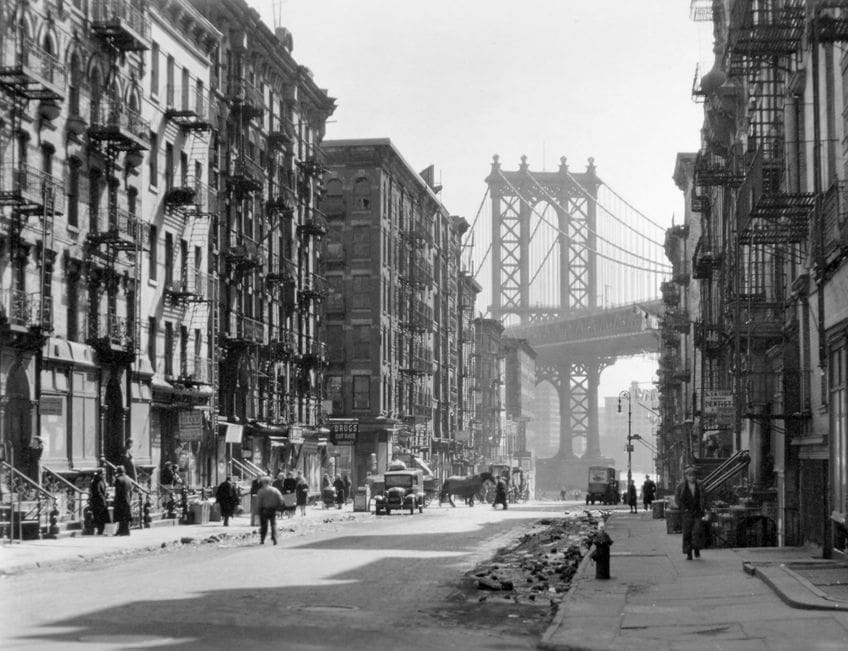
The Influence of Avant-Garde and Architecture
Abbott was deeply influenced by the avant-garde movement, which shaped her approach to photography. She worked with the notion that a photograph should capture the essence of the modern world, often featuring the emerging skyscrapers and changing streetscapes of New York. The architecture of the city became a recurring subject in her work, with Abbott approaching these structural giants as both documentary and aesthetic objects.
The fascination with structurally and culturally significant buildings was reflected in the meticulous composition and attention to detail in her photographs.
Photographic Methods and Materials
Abbott’s photographic process involved a hands-on approach in the darkroom, where she served as both the photographer and the darkroom assistant. She primarily used gelatin silver print technology; this medium was favored for its tonal range, sharpness, and durability. Her printing methods were careful and precise, demanding a high level of skill and attention to the interplay of light and shadow. The choice of materials and her deliberate manipulation of them was crucial to the final image outcome, impacting aspects from texture to depth, emphasizing the composition and aesthetic qualities of her subjects.

Accomplishments
Berenice Abbott is renowned for her significant contributions to photography during the 20th century. Her achievements are characterized by a diverse body of work that spans various subjects and a dedication to visual education. Notable works include:
- Changing New York: This influential project documented New York City’s architecture and urban landscape in the 1930s, capturing the transformation of the city.
- Portraits of Cultural Figures: Abbott’s portraits from the interwar period provide a vivid catalog of luminaries from this era, including authors, artists, and intellectuals.
Abbott’s work in the 1940s to 1960s on scientific imagery helped bridge the gap between science and visual arts. Her photographs in this arena were educational and sought to make science accessible to the public. Throughout her career, Berenice Abbott received numerous accolades and her work was exhibited in several prestigious institutions.
She has had a lasting impact on documentary photography and her images continue to be celebrated for their clarity, vision, and historical significance.
Influence and Contributions
Berenice Abbott was a key figure in the American photography landscape, particularly renowned for her comprehensive urban documentation of New York City. Her pragmatic and educational approach to photography has left a lasting impact on both the medium and future generations of photographers.
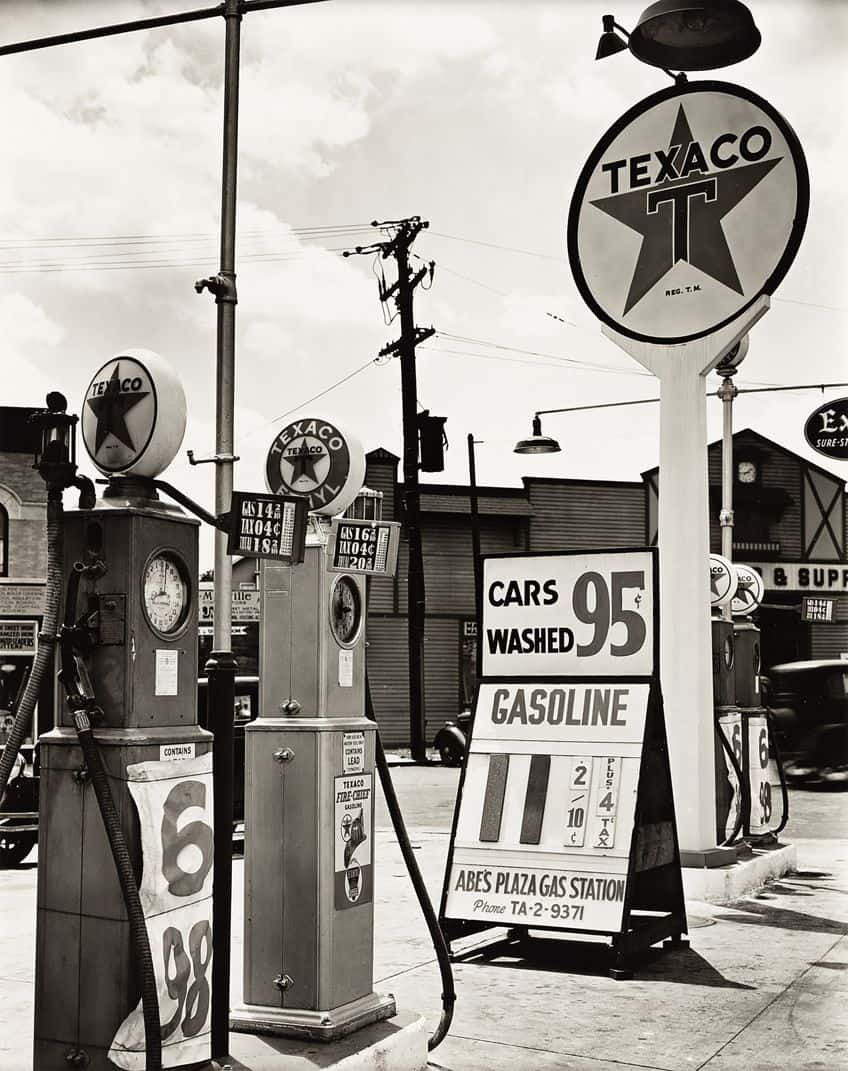
Teaching and Influence on Future Generations
Abbott’s career extended beyond her own photographic achievements, shaping the future of many aspiring photographers. In the 1940s, she created the “Guide to Better Photography”, aimed at educating individuals on the principles of photography, thus showcasing her commitment to teaching. Her influence was also felt academically, as she spent two decades teaching at the New School for Social Research in New York City.
Her teachings emphasized the importance of documentary photography and the power it holds in societal observation and commenting.
Preservation of Works and Collections
Abbott’s commitment to the archival and preservation of photographic works significantly contributed to the cultural heritage of photography. She was instrumental in the promotion and preservation of the works of Eugène Atget, ensuring his legacy within the domain of documentary photography.

Abbott’s own photographs serve as an invaluable collection at institutions such as the Museum of the City of New York, illustrating the transformative architecture and urban design of 1930s New York City. Her collection there, established in part during her Works Progress Administration (WPA) funded project, provides a meticulous record and appraisal of the evolving metropolis. Abbott’s works and efforts have left an indelible mark on the city’s historical documentation.
In Maine, where Abbott eventually settled, her contributions continue to live on as her photographs provide educational insights and encapsulate a visual history that remains integral to American cultural and educational spheres.
The Legacy of Berenice Abbott
Berenice Abbott’s contribution to photography is marked by her transformative vision that bridged the gap between documentary realism and modernist art. Her work from the 1920s to the 1960s helped establish photography as a legitimate form of artistic expression. Abbott’s key contributions to photography included:
- Portraiture: Abbott is recognized for her portraits of notable figures within the artistic and literary circles of the interwar period, capturing the essence of cultural icons with clarity and depth.
- Changing New York: Perhaps her most famous project, Changing New York, showcased in the 1930s, highlighted the architectural metamorphosis of New York City with a focus on everyday scenes and monumental structures, standing as a historical snapshot of urban transformation.
- Scientific imagery: She ventured into the realm of scientific photography in the 1940s, creating images that visualized scientific concepts. This work showcased her ability to make complex phenomena comprehensible through visual interpretation.
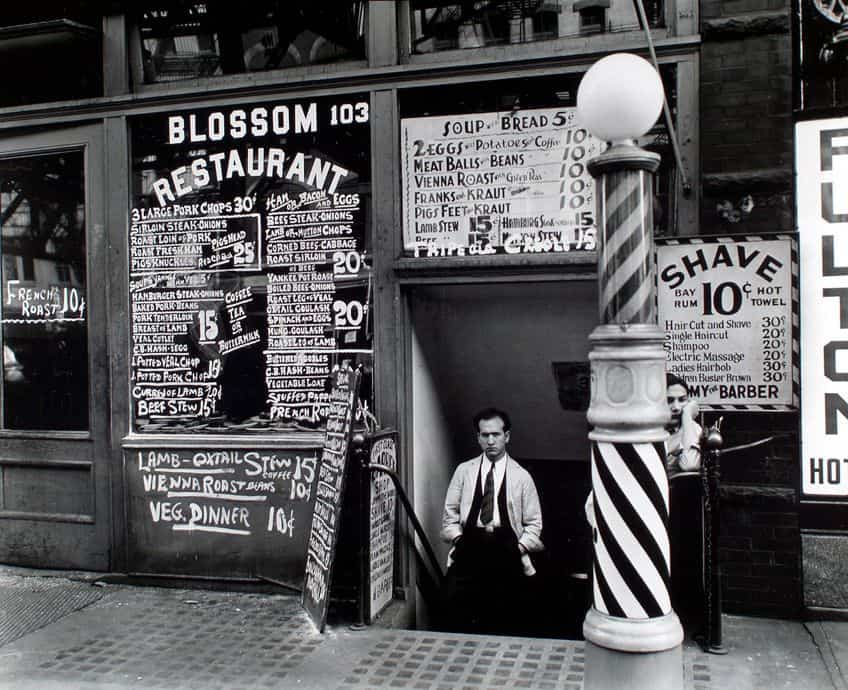
Her photographs have been widely exhibited, including in prestigious institutions like the Museum of Modern Art (MoMA) in New York, ensuring her work remains influential. Abbott’s techniques and approaches are taught in photographic education, influencing generations of photographers. Despite her passing in 1991, Abbott’s legacy endures through her ability to blend precision with artistry, capturing the evolving landscapes of America and the intrinsic beauty of the scientific world. Her body of work continues to resonate, signifying her role as a pivotal figure in the history of photography.
Berenice Abbott’s impact on photography reverberates through time, cementing her legacy as a visionary artist and pioneer in the field. Her ability to capture the essence of subjects with clarity and depth, combined with her dedication to pushing the boundaries of artistic expression, sets her apart as a true master of the craft. As we reflect on Abbott’s body of work, we are reminded of the power of photography to not only document moments in history but also to evoke emotion, spark curiosity, and provoke thought. Her influence continues to resonate, inspiring generations of photographers to explore new perspectives and push the boundaries of visual storytelling.
Frequently Asked Questions
What Are Some of Berenice Abbott’s Most Famous Photographs?
Berenice Abbott is renowned for her portrayals of New York City, with famous photographs including Nightview, New York, and Flatiron Building. These images are part of her Changing New York series which captures the transformation of the city during the 1930s.
What Motivated Berenice Abbott to Focus on Photographing New York?
Upon her return to New York City in 1929, Abbott was captivated by the city’s evolving architecture and vibrant street life. This transformation motivated her to document the city, leading to the creation of her prominent Changing New York project.
How Was Berenice Abbott’s Early Life Influential in Shaping Her Photography Career?
Abbott’s early life exposed her to various artistic circles and mediums. Her study of sculpture and associations with influential artists like Marcel Duchamp honed her visual sensibilities. Working as Man Ray’s assistant further influenced her technique and laid the groundwork for her photographic style that blended realism with artistic expression.
Isabella studied at the University of Cape Town in South Africa and graduated with a Bachelor of Arts majoring in English Literature & Language and Psychology. Throughout her undergraduate years, she took Art History as an additional subject and absolutely loved it. Building on from her art history knowledge that began in high school, art has always been a particular area of fascination for her. From learning about artworks previously unknown to her, or sharpening her existing understanding of specific works, the ability to continue learning within this interesting sphere excites her greatly.
Her focal points of interest in art history encompass profiling specific artists and art movements, as it is these areas where she is able to really dig deep into the rich narrative of the art world. Additionally, she particularly enjoys exploring the different artistic styles of the 20th century, as well as the important impact that female artists have had on the development of art history.
Learn more about Isabella Meyer and the Art in Context Team.
Cite this Article
Isabella, Meyer, “Berenice Abbott – The Female Pioneer in Urban Photography.” Art in Context. April 23, 2024. URL: https://artincontext.org/berenice-abbott/
Meyer, I. (2024, 23 April). Berenice Abbott – The Female Pioneer in Urban Photography. Art in Context. https://artincontext.org/berenice-abbott/
Meyer, Isabella. “Berenice Abbott – The Female Pioneer in Urban Photography.” Art in Context, April 23, 2024. https://artincontext.org/berenice-abbott/.









